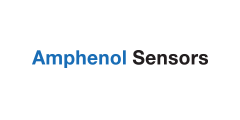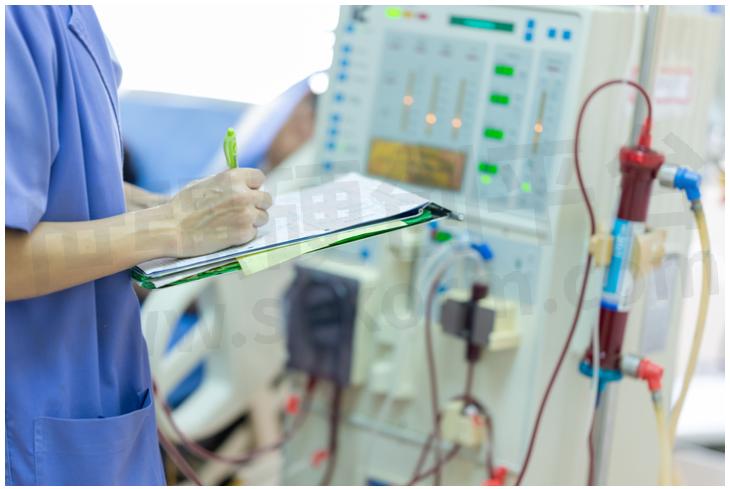Fast Response Times and Accurate Readings Temperature Sensors‘ Important Role in Critical Care

In medicine, there's a simple reality: No two patients are the same.
Thus, their treatments and the accompanying monitoring are oftentimes tailored to their individual needs. This is especially true in critical care, where patients are at their most vulnerable and the nuances of treatment have the biggest impact on immediate and long-term health outcomes.
Whether used for monitoring or performing a procedure, the demand for accurate and reliable monitoring of key metrics, such as temperature, are key components of successful critical care.
Thus, temperature sensors and the medical devices they're installed in require the highest performance levels for medical professionals to deliver the highest-level care.

TEMPERATURE SENSORS & MEDICAL DEVICES: 6 APPLICATIONS
Like pressure sensors, temperature sensors are among the most important components in critical care medical devices. From patient monitors to ventilators, temperature sensors are used in a wide range of applications.
And also like pressure sensors, temperature sensors help medical professionals perform their life-saving work through fast(er) response times and accurate readings of a patient's condition or a device's performance:
Cardiac care
Skin surface
Dialysis
Respiratory care
Thermometry
Laser surgical assemblies
1. CARDIAC CARE
In cardiac critical care, temperature sensors are used to monitor a patient's core body temperature, as well as skin temperature at various sites. This information can be used to detect and manage temperature-related complications, such as fever or hypothermia, that may occur during cardiac surgery or treatment.
During cardiac surgery – a procedure requiring extreme patient monitoring – temperature sensors are often used to keep tabs on the patient's core body temperature, which can be affected by the anesthesia and surgical environment.
In addition to body core temperature monitoring, skin temperature sensors can also be used to monitor the temperature of the hands and feet, which can be an early indicator of poor cardiac function. Changes in skin temperature can be caused by changes in blood flow to the extremities, which can indicate the need for intervention to maintain stable cardiac function.
How Amphenol Sensors Meet Cardiac Care Applications: Small diameter chip-in-glass or glass bead thermistor assemblies for thermodilution catheters and continuous cardiac output systems.
2. SKIN SURFACE
Temperature sensors are extensively used to monitor skin surfaces in critical care. These sensors are typically placed on a patient’s forehead, chest, and other areas of the body that may be vulnerable to infection, inflammation, or other medical concerns. The purpose of patient temperature monitoring is to detect any abnormalities, which can indicate a variety of health concerns such as fever or infection.
A body heat sensor of sorts, skin surface temperature sensors play a critical role in care for the most vulnerable of patients – premature infants. Temperature monitoring of these infants can be used to anticipate complications and provide the necessary interventions for stabilization.
Regardless of the scenario in which they're used, skin surface temperature monitoring also helps healthcare professionals in critical care settings:
Determine the effectiveness of treatments
Monitor trends in patient condition
Make any necessary changes to treatment plans accordingly
How Amphenol Sensors Meet Skin Surface Temperature Monitoring Applications: Interchangeable thermistor assemblies with a temperature accuracy of ±0.05°C @37°C for continuous patient monitoring and neonatal incubator systems.
3. DIALYSIS
Temperature sensors are essential components of dialysis machines. They're primarily used to measure the temperature of the dialysate (the solution that runs through the patient's bloodstream to filter out toxins).
If temperatures become too high or low, it can cause health problems such as hypothermia or overheating for the patient. Suffice it to say, by using temperature sensors to monitor the dialysate temperature at all times, the dialysis process is kept within safe parameters.
Furthermore, some dialysis machines also use a series of heaters and coolers that can be regulated by temperature sensor readings to help maintain an optimal temperature range throughout treatment. This helps avoid any potential side effects caused by extreme temperatures during dialysis sessions.
How Amphenol Sensors Meet Dialysis Applications: Small interchangeable thermistors for assembly into metal housings used to monitor fluid temperature during dialysis.
4. RESPIRATORY CARE
In critical care, temperature sensors meet two key applications: ventilator flow tubes and humidifiers.
In ventilator flow tubes, the sensors measure the temperature of the air flowing through the tube. Air delivered to the patient needs to be at the correct temperature (98.6℉) and humidity level to prevent damage to the patient's airway and ensure that the patient is comfortable. If the air is too cold or too hot, it can cause a host of issues:
Discomfort
Dry out the airway
Mucosal damage
Bleeding
Adding moisture to the air, humidifiers are invaluable for treating patients with respiratory conditions such as asthma, COPD, and cystic fibrosis. Just like the air in a ventilator flow tube, the water used in humidifiers needs to be at the appropriate temperature for the patient to prevent bacteria growth.
How Amphenol Sensors Meet Respiratory Care Applications: Glass diode or epoxy-coated chip thermistors for temperature monitoring of ventilator flow tubes and humidifiers.
5. THERMOMETRY
The measurement of body temperature, thermometry is the most general way to look at temperature monitoring. It also represents one of the most important metrics inpatient critical care. Accurate medical temperature monitoring is essential for assessing the severity of illness, tracking patient progress, and guiding treatment decisions.
How Amphenol Sensors Meet Thermometry Applications: Interchangeable thermistors and infrared (IR) temperature sensors for oral, rectal, tympanic, and auxiliary temperature measurements.
6. LASER SURGICAL ASSEMBLIES
Temperature sensors are essential for laser surgical assemblies, as they allow for the precise control of heat energy. With the high degree of control required for laser surgery procedures, surgeons can ensure that tissue is heated to a specific temperature, which minimizes the risk of burning or damaging surrounding tissue or organs.
Additionally, these sensors also help protect medical personnel from exposure to high levels of heat by alerting them when temperatures rise above their set threshold limit. In some cases, they can even shut down devices automatically in response to dangerous levels of heat.
How Amphenol Sensors Meet Laser Surgical Assembly Applications: Miniature chip-in-glass or sleeved chip thermistors with fine diameter wires for insertion into hypodermic needles for myocardial surgeries and external attachment to metal lumens used during laser surgery.
CUSTOM TEMPERATURE SENSOR INTEGRATION DESIGN CONSIDERATIONS
What's the best temperature sensor for your OEM medical device? The sensor that's custom designed for it.
Yet like all other sensors on the market – custom and off-the-shelf – temperature sensors have their own specific considerations to work through with your sensor manufacturer:
Application Temperature Range – What are the minimum and maximum operating temperatures of the device the sensor is in? In addition, what are the minimum and maximum temperatures the sensor will be expected to measure?
Temperature Accuracy – How accurate does the sensor need to be over the range? As no two devices or applications are the same, the threshold for accuracy is not always the same. Think of it as the sensor's tolerance level.
Temperature Consistency – Will the temperature the sensor's monitoring constantly change or will it stay generally stable?
Sensor Lifespan – Is the sensor disposable or reusable? If it's reusable, how is the device cleaned and how long is it expected to last?
Packaging – How will the sensor be integrated into the application? What does the sensor's housing need to withstand and how does the sensor need to be constructed (size, shape, weight)?
Environment – What's the sensor going to be exposed to while in use – Air? Fluid? Chemicals?
CUSTOM MEDICAL TEMPERATURE SENSORS FOR TOP-TIER PATIENT CARE
Though the world of medicine and treatment is ever-evolving, the individuality of patients and the need for extremely accurate monitoring remains constant.
With an increasing focus on personalized medical treatments driving the need for more-tailored monitoring solutions, high-performance sensor solutions are an absolute must – especially in critical care.
By incorporating custom temperature sensors into medical equipment, healthcare providers can enhance their ability to deliver personalized and precise treatments, ultimately improving patient safety and well-being.
- +1 Like
- Add to Favorites
Recommend
- Temperature Characteristics of Current Fuses
- Find Your Solutions from Wide Lineup of Temperature Sensors for Industrial Machinery— Slim, Compact Temperature Sensors for Motors
- The Application of Socay NTC Thermistors in The Field of Temperature Measurement, The Temperature Measurement Range of Thermistors Can Reach -40 ℃ to +125 ℃
- Johnson Electric Presents High Voltage DC751 Series for Stick Blenders with a 20% Lower Temperature Rise
- Keeping Cool with Data Center Temperature Sensors
- In 2022, Melexis’ Outperforming Product Lines Were Current Sensors, Embedded Drivers, Magnetic Position Sensors, and Temperature Sensors
- LoRaCC68 Series Wireless Transceiver Modules with a Sensitivity of -129dBm and an Output Power of 22dBm, Achieve Temperature Control in Thermostats
- NOVOSENSE NST1002 Temperature Sensor Facilitates Accurate CGM Measurement with Glucose Monitoring Black Technology
This document is provided by Sekorm Platform for VIP exclusive service. The copyright is owned by Sekorm. Without authorization, any medias, websites or individual are not allowed to reprint. When authorizing the reprint, the link of www.sekorm.com must be indicated.





























































































































































































































































































































































































































































































































































































































































































































































































































































































